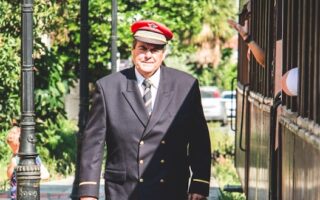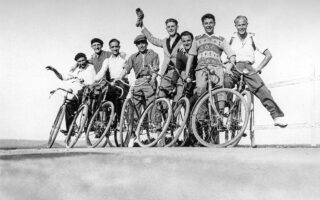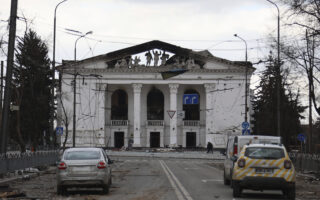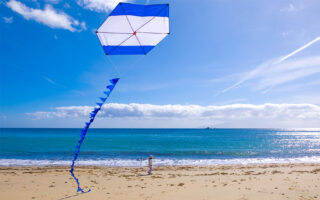‘This is one of the few times I really felt the strain’
Fire Service rescuers and hospital doctors recount scenes and thoughts from the immediate aftermath of the deadly Larissa train wreck
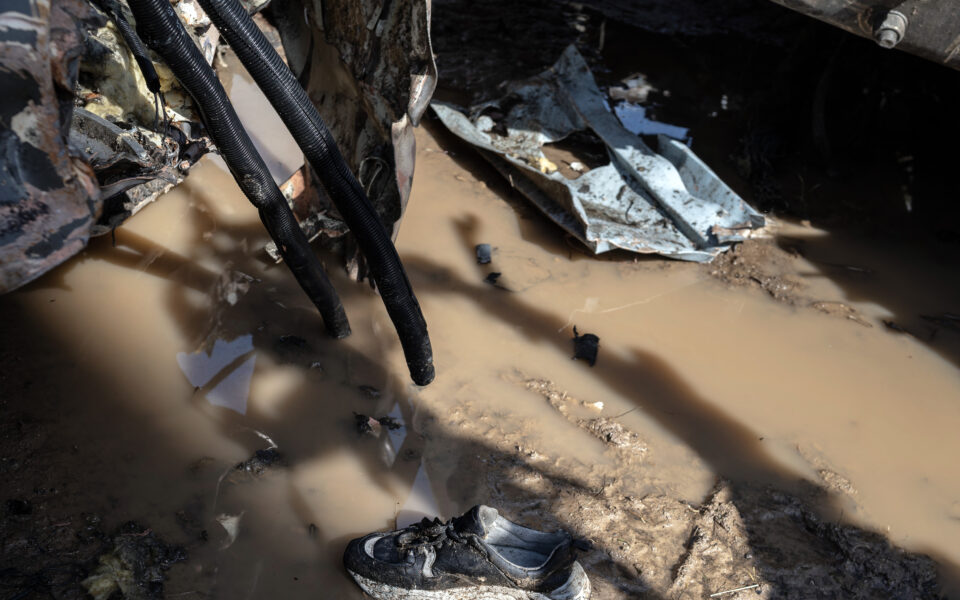
It wasn’t a journey carried out in silence. Some 20 kilometers separated them from the scene of the disaster. As they headed toward Larissa, the first group of Fire Service firefighters and rescuers to respond to the dispatch about the head-on collision between two trains last Tuesday night were constantly receiving updates about what they were about to encounter. Some of the passengers had already managed to get free of the cars by kicking through windows and doors, or jumping through the torn metal walls of the carriages. They ran into the nearby fields, lighting the way with their cellphone flashlights and calling for help, describing the chaos all around.
“We immediately thought of the bus crash at Tempe in 2003, in which 21 students died. Some of us had been on duty then and were the first responders in that incident as well,” one of the firemen tells Kathimerini. “It’s an incident that has stayed with us because it was the biggest tragedy we had experienced in all our years of service. We talked about it the entire way to the train wreck. We talked about how tough it was and what we needed to brace ourselves for.”
The first Fire Service teams reached the scene shortly after midnight. The front cars of the passenger train that had slammed into a freighter were on fire, while people were still trapped in the cars that had come off the rails behind them. Getting the survivors out was the first thing the firemen focused on. Other passengers also helped.
“We can’t act with emotion, because we’d be making different decisions. Our work needs to be done as fast as possible, and calmly. You can’t allow yourself to get into the mind of the victim if you want to act like a rescuer,” the first responder tells Kathimerini, requesting that his name not be made public.
By dawn on Wednesday, when reinforcements arrived from Thessaloniki in the north and the fire cause had been extinguished, a rescue dog working with the EMAK disaster response unit was carrying out an inspection of the perimeter of the crash site to locate any passengers that may have been flung into the surrounding fields. The dog could not help efforts in the wreckage just yet, as the abundance of victims and scents could be misleading.
Cranes and other heavy lifting equipment were brought in to shift the train cars, pry open doors and clear the area so that the rescuers could start searching inside the carriages, using their hands and specialized tools to comb through the wreckage. Everything was covered in oil and the smell of burnt plastic was pervasive.
In the aftermath of the crash, the list of people reported missing by relatives and friends numbered 56. As the days passed, the death toll climbed to 57. The firefighters observe that if the collision had happened just a few minutes earlier, inside the tunnel the passenger train had just gone through, the death toll would have been much higher as a result of the fumes and trapped heat from the fire.
A Fire Service officer who spoke to Kathimerini from the scene of the accident said one of the reasons it was so deadly was that both the passenger and the freight train were moving fast during impact, at speeds of 135 and 110 kilometers per hour, respectively. The exact speeds are expected to be confirmed, however, by the ongoing investigation.
Some of the Fire Service rescuers who worked this scene had prior experience of such disasters. A few had searched for survivors on the ill-fated Euroferry Olympia in February 2022, while others had recently returned from Turkey where they helped in the aftermath of last month’s deadly earthquakes. These are professionals who have often dealt with extremely difficult scenes. No matter how seasoned they may be, however, there are times when it’s just too much. This was evident by the look on their faces during the search, but also by how hard they found it to speak of the mission to Kathimerini afterward. Some had spent 16 straight hours in the field, others 30, taking only brief breaks to catch their breath.
“I have seen a lot; I’m tough. But this is one of the few times I really felt the strain,” one of the rescuers tells Kathimerini. “The survivors had made it out within the first hour. After a certain point, all we were pulling out were bodies. Three of my friends were sending me photographs while I was in there of people who had been reported missing, but I couldn’t help. There were a lot of young people in those two cars and we kept finding their clothes and belongings. I saw some cosmetics in one corner; they smelled of a woman’s perfume.”
This particular firefighter had made the same journey from Athens to Thessaloniki just a few weeks earlier, while his son, a university student, also uses the train frequently. He thought about that; how it could have been them on the train that day. “It’s our job, it’s what we’re trained for, but we are also human, and we can crack. These people died for no reason, on what is considered the safest means of transport. I still haven’t recovered,” he says.
The constant television coverage of the accident hasn’t helped either.
“Everyone has a different approach,” a colleague adds. “We talk about everything between ourselves, but ultimately we have to deal with it alone.”
The hospitals
The first injured train passengers and crew were rushed to the University Hospital of Larissa, which was on call on the night of the accident. Later, the city’s general hospital was also put on emergency duty. By half-past midnight all the frontline medics were at their posts, ready to treat survivors. Antonis Pantelidis and Konstantinos Makris are trauma and orthopedic specialists at Larissa General Hospital. They are not much older than many of the victims they treated. “Because everything was happening so fast, I switched on the TV as soon as I got the call and managed to see that a passenger train had crashed. That’s when I knew that we’d be looking at a lot of victims,” says Pantelidis.
The biggest rush of incoming patients lasted about three hours. Most of them were suffering from broken bones and other injuries. One patient had dislocated his shoulder trying to smash open a window to escape. Another had superficial burns on his eyelashes. The general hospital did not receive any inhalation burn victims; they were rushed to the university hospital, where three people had to be intubated.
“Most of the injured passengers were young, between 18 and 20 years old. Many of them were also confused. One of the girls we operated on had post-traumatic amnesia and couldn’t even remember the accident. The brain can shut down during such a shock,” says Pantelidis. The amnesia only lasted until the following morning.
The first piece of information that reached the head of the Orthopedic Clinic at Larissa General Hospital, Kostas Bargiotas, was that a train had “come off the rails.” As he headed to the hospital, he thought that maybe he wouldn’t have to deal with too many difficult cases if it was a simple derailment. When he got there though, he was told that it was a collision between two trains and realized what was in store as soon as the first ambulances started to arrived. “It seems that those who were in the front carriages didn’t even make it out with heavy injuries. They died at the scene of the accident,” he tells Kathimerini.
Bargiotas had volunteered for the team that responded to the road accident involving the school students in Tempe in 2003. He ponders what happened now with the “student train,” where many of the passengers were university students returning to the city where they’re studying. “You head off from Livadia to go to Thessaloniki and find your friends, and suddenly find yourself instead in hospital with broken bones. It’s not easy to handle,” he says.
The inflow of new patients at Larissa General Hospital stopped at around 4 a.m. on Wednesday. “After that, it was just casualties,” says Makris. “Measures need to be taken – even if it is, unfortunately, after the fact – so that we never experience something like it again.”
The waiting
The two Larissa hospitals became the epicenter of the tragedy. Relatives and friends of the injured passengers waited outside the intensive care units to hear from the doctors, while dozens of parents and siblings waited in the amphitheater of the general hospital for news from labs in Athens after giving DNA samples that were cross-checked against samples from the unidentified bodies. Teams of psychologists and psychiatrists were on hand to help them cope. Across the street, a group of students had hung up a banner reading: “No tolerance for coverups about our dead fellow students and the other victims.” A man paced back and forth beside this banner for hours. His daughter had been on the train, but she was not among the injured.
